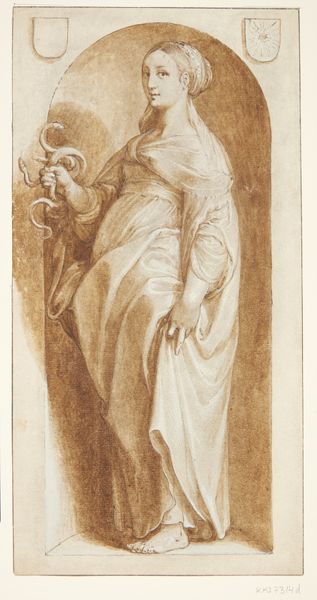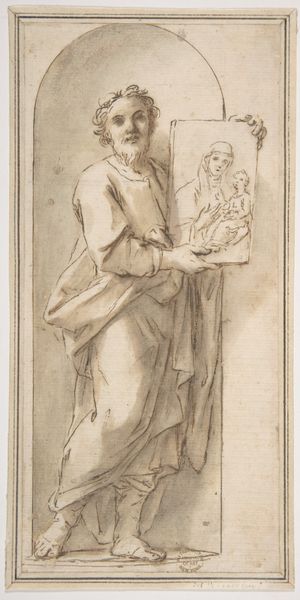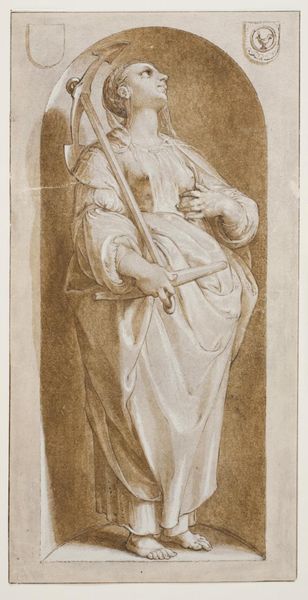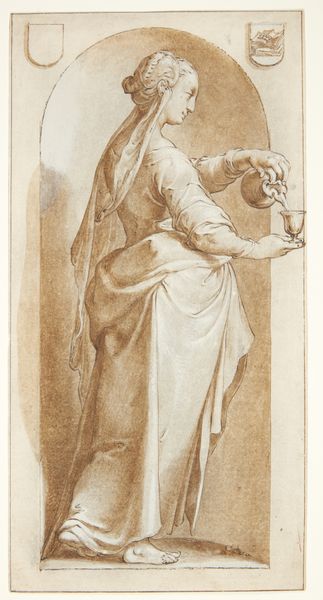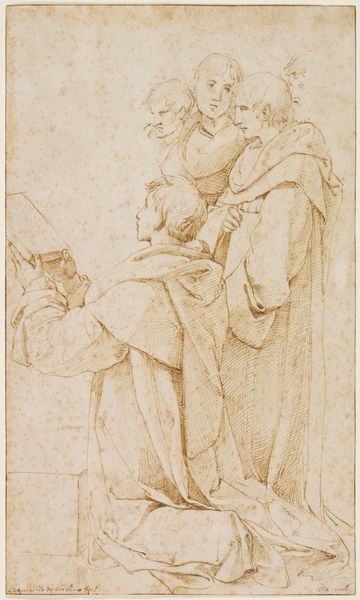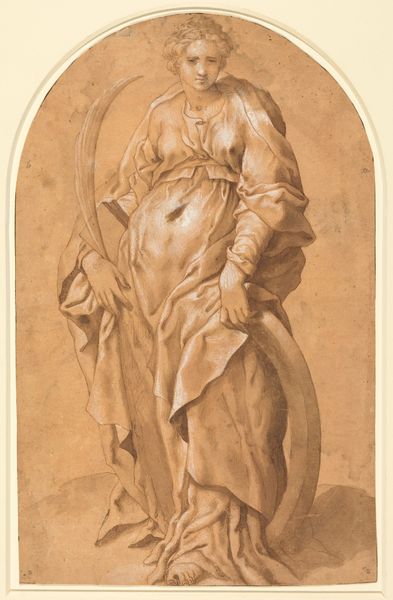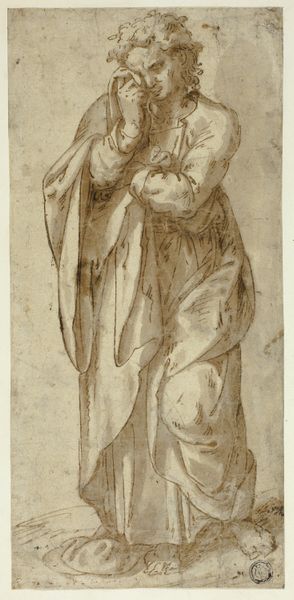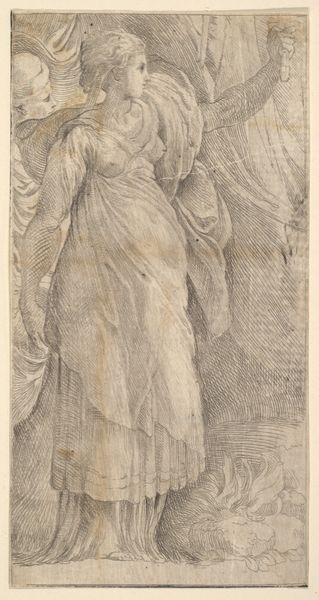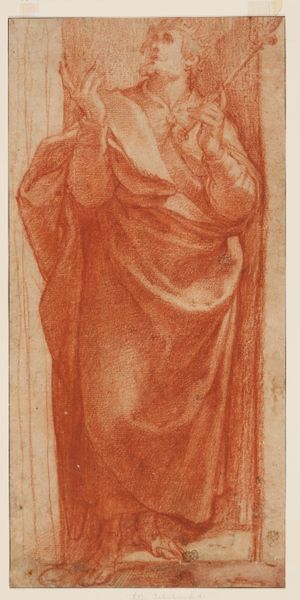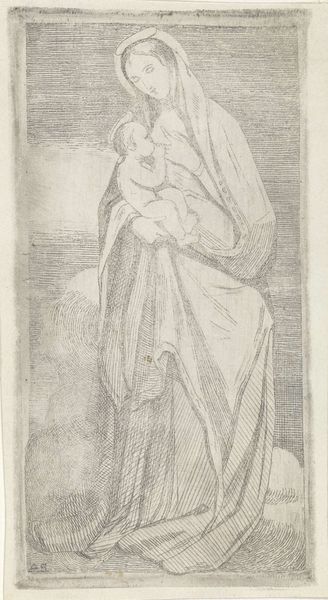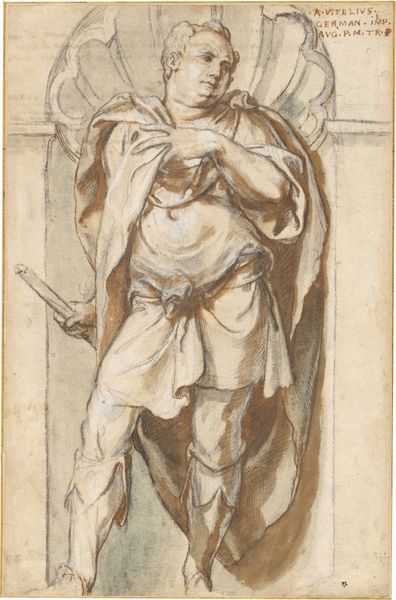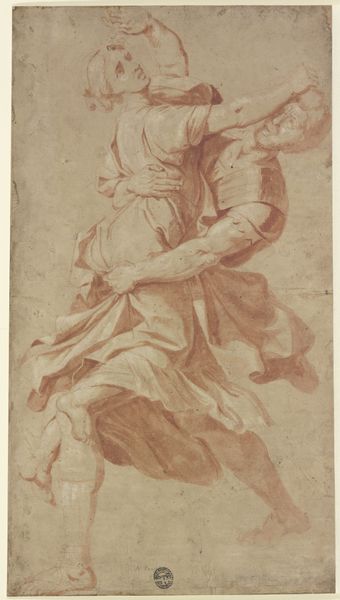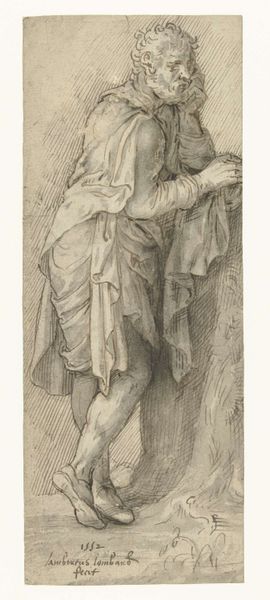
drawing, paper, ink
#
drawing
#
charcoal drawing
#
mannerism
#
figuration
#
paper
#
ink
#
pencil drawing
Dimensions: 323 mm (height) x 165 mm (width) (bladmaal)
Curator: Hendrick Goltzius created this artwork titled “Næstekærlighed” in 1592 using ink and pencil on paper. Editor: My immediate impression is one of muted intimacy. The sepia tones create a very warm atmosphere, but also convey restraint. It almost feels like glimpsing a private moment, solidified. Curator: Precisely. The Mannerist style evident here emphasizes a certain elegance and artifice, with elongated forms and the almost theatrical drapery. The drawing technique is incredible. Notice the virtuosity in rendering form with line and subtle tonal variations; a prime example of Goltzius’s skill. Editor: Right, but it’s more than just skillful rendering. Look at the title - translated it means "Love of One's Neighbor," or "Charity." This depiction of the Madonna and two infants taps into a powerful cultural symbol regarding compassion, both maternal and divine, within a 16th-century religious landscape facing major divisions. It makes a statement about what the most important type of love actually looks like. Curator: True, although I'd argue the success of the image also rests upon its internal logic, its play of forms. Consider the repetition of the curved arch at the top, echoing the curves of the figures and even the folds of fabric. Everything contributes to a sense of visual harmony, that perfect Mannerist ideal. Editor: I agree that the composition creates unity, but its visual power stems from something that extends past this idea of "perfect harmony." It suggests active engagement—how acts of love manifest amidst turmoil. The use of drawing on paper almost democratizes it, making it immediately accessible, as opposed to grand religious painting in that period which would have conveyed only wealth and privilege. Curator: I see your point, yet I maintain we can appreciate the piece on multiple levels: for its formal achievements, as well as its resonance within socio-political discourses. Editor: Absolutely, that tension is what makes discussing pieces like these so invigorating, as our views are informed by differing—but ultimately related—lenses.
Comments
No comments
Be the first to comment and join the conversation on the ultimate creative platform.
